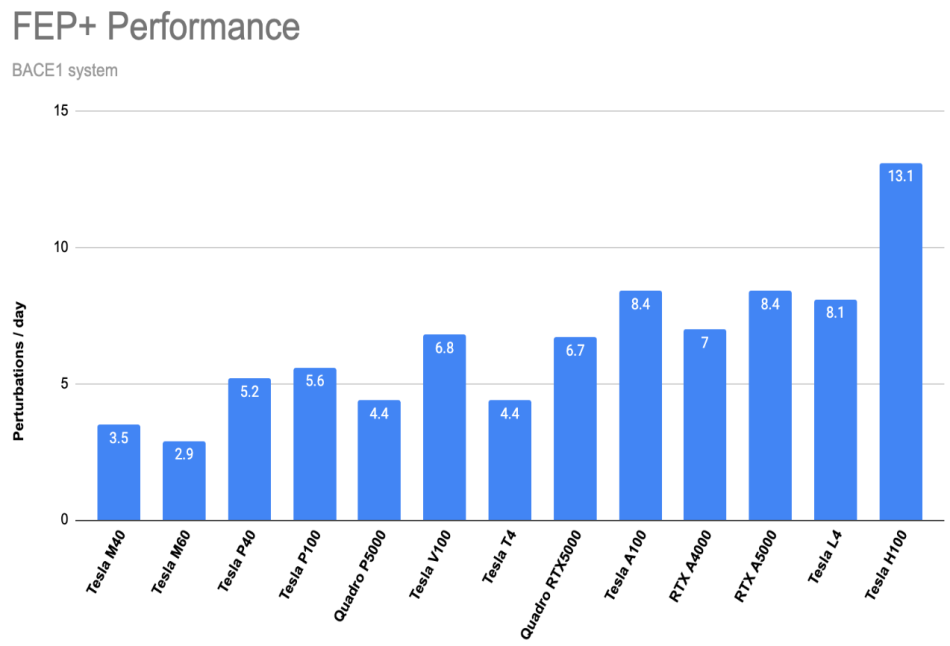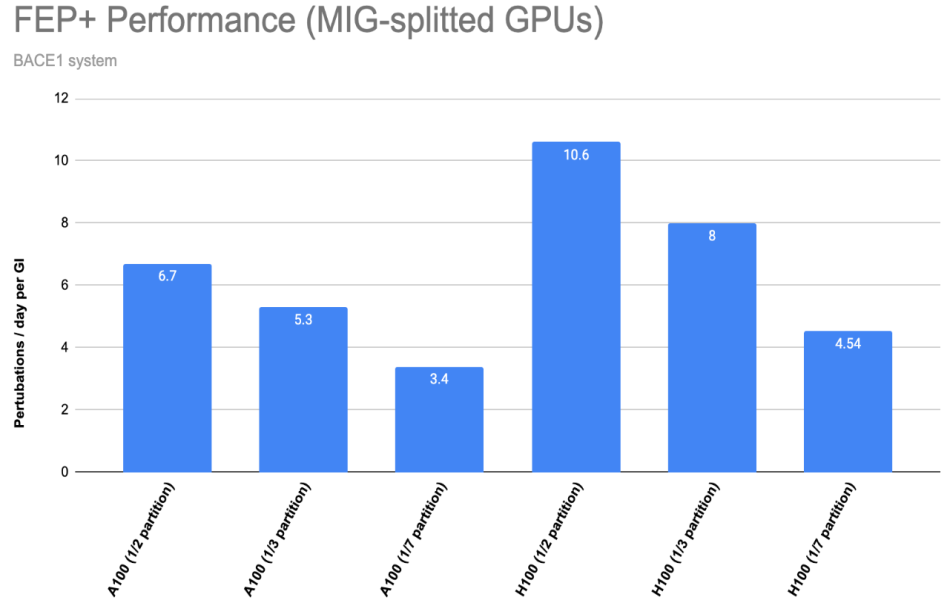FEP+ performance data for supported cards
Free Energy Perturbation (FEP) calculations occur on time scales that are computationally demanding to simulate. A key factor in determining whether a simulation will take days, hours, or minutes to run is the hardware being used. The advent of GPU computing, however, has opened the door to a new world of computationally intensive simulations that would not have been possible even a few years ago.
When choosing a GPU card there are a number of factors your IT team must consider including, price, availability (both for on-prem and cloud usage), power consumption, queueing system integration, license usage, and performance throughput. We provide performance data for a single Relative Binding FEP system (BACE1) that is available in our tutorials with default settings. It must be noted that other flavors of FEP+ (AB-FEP, Solubility FEP) and other properties of either the individual perturbations or of the chemical systems will affect these timings. These properties can sometimes be changed either directly by the user (simulation time, number of lambda windows) or by our automated setup choosing the most appropriate parameters for your system.

Figure 1:Scaling across various GPU cards when running FEP+ BACE1 tutorial using Schrödinger Suite 2024-1.

Figure 2:Scaling across MIG-splitted GPU cards when running FEP+ BACE1 tutorial using Schrödinger Suite 2024-1.